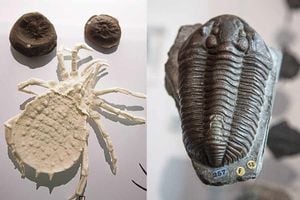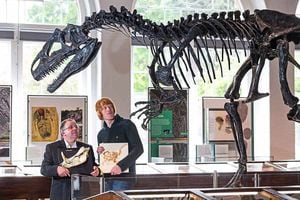Dudley Bug in pride of place at museum
The Dudley Bug and the Coseley Spider are among the major scientific finds taking pride of place at the Lapworth Museum of Geology, which opened this week after a £2.7 million refit.

The museum, at the heart of the University of Birmingham, has undergone a massive refurbishment.
It aims to explore life in the Midlands over the past 3.5 billion years, with displays looking at rocks, fossils, volcanoes, earthquakes and dinosaurs.
The Dudley Bug is a 428 million year old trilobite. They looked like giant woodlice and were found in the limestone caverns around Dudley.

The Coseley Spider, or eophrynus prestvicii, is a spider-like arachnid from the late Carboniferous Period around 315 million years ago. It was an active predator chasing its prey before finishing it off with its powerful jaws.
Also on display will be the JJ Shaw seismograph. Mr Shaw (1873-1948) was a West Bromwich-based pawnbroker who became interested in earthquakes.
He built a device to record earthquakes, using bits of bikes, tin cans, knitting needles and anything else he could find.
When it worked he had his prototype precision made and turned his greenhouse and cellar at his home in West Bromwich into a mini production line.
The seismograph was distributed around the world and became the standard device for measuring earthquakes. Shaw also recorded earthquakes in his seismic observatory that he set up in his home.
The Lapworth Museum has been closed for nearly two years. Director Jon Clatworthy said: "The new exhibits will provide a far more hands-on approach to learning about the 3.5bn years of history we showcase here."





